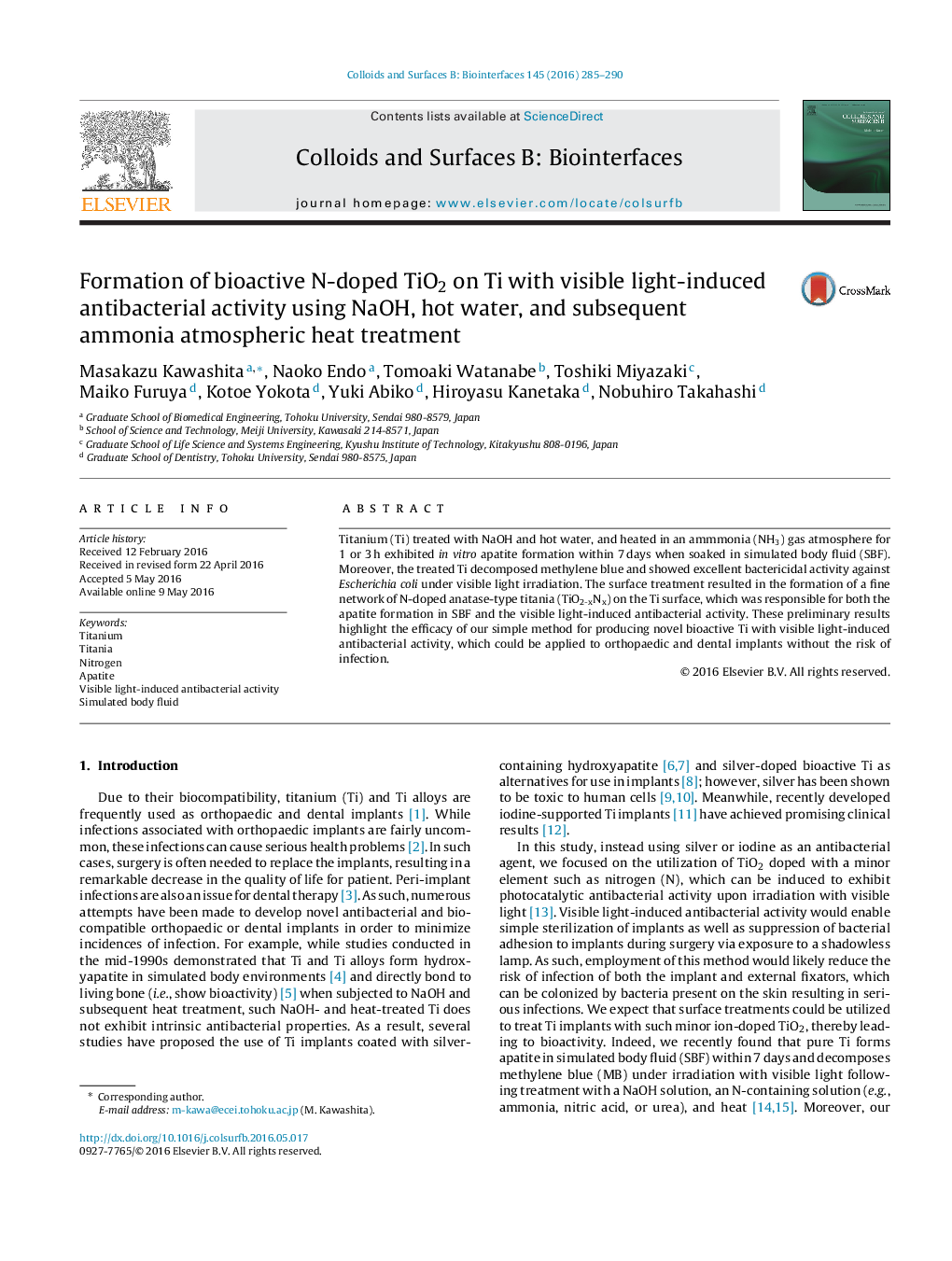| Article ID | Journal | Published Year | Pages | File Type |
|---|---|---|---|---|
| 598950 | Colloids and Surfaces B: Biointerfaces | 2016 | 6 Pages |
•Ti treated with NaOH, hot water, and heated in an NH3 atmosphere formed apatite in simulated body fluid.•N-doped anatase-type titania (TiO2-xNx) was formed on the surface of the treated Ti.•The treated Ti decomposed methylene blue and showed excellent antibacterial activity against E. coli.
Titanium (Ti) treated with NaOH and hot water, and heated in an ammmonia (NH3) gas atmosphere for 1 or 3 h exhibited in vitro apatite formation within 7 days when soaked in simulated body fluid (SBF). Moreover, the treated Ti decomposed methylene blue and showed excellent bactericidal activity against Escherichia coli under visible light irradiation. The surface treatment resulted in the formation of a fine network of N-doped anatase-type titania (TiO2-xNx) on the Ti surface, which was responsible for both the apatite formation in SBF and the visible light-induced antibacterial activity. These preliminary results highlight the efficacy of our simple method for producing novel bioactive Ti with visible light-induced antibacterial activity, which could be applied to orthopaedic and dental implants without the risk of infection.
Graphical abstractFigure optionsDownload full-size imageDownload as PowerPoint slide
